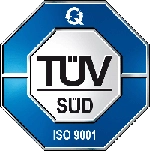Ruling No. 290 of 2025 issued by the Italian Revenue Agency addresses a matter of particular relevance in the field of international taxation of individuals: the tax treatment, in Italy, of the amount received by a resident heir as liquidation of a U.S. pension fund held by the de cuius, who was himself an Italian-U.S. citizen residing in the United States at the time of death.
The issue arises within a complex framework involving international succession law, the rules governing pension income, and the interaction between domestic law and the Convention against double taxation between Italy and the United States.
Facts of the Case
The Applicant, who is tax resident in Italy, is the sole heir of a citizen with dual Italian and U.S. nationality, who resided in the United States until his death in 2021.
The estate consists of:
- assets located in the United States, subject to 1% U.S. state inheritance tax;
- an individual voluntary retirement account funded by contributions from the deceased (de cuius), managed by a U.S. company, and subject to an annual required minimum distribution (RMD) taxed in the United States with a 30% withholding.
In 2024 a final liquidation of the pension fund was carried out in favor of the heir, subject to a 10% U.S. withholding tax. The amount and withholding were indicated on Form 1042-S issued by the pension fund manager, using Code 15, which includes “pensions, annuities, alimony, and/or insurance premiums.”
Based on these elements, the Applicant asks whether the amount should be taxed in Italy as the liquidation of a savings accumulation fund — and therefore as investment income pursuant to Articles 44 and 45 of the TUIR — or as a pension, falling within income treated as employment income under Article 49(2)(a) of the TUIR.
The Applicant also seeks clarification on the taxable base and the effect of the foreign withholding.
The Heir’s Position
The Applicant suggests classifying the amount as investment income. In that case, only a possible capital gain accrued between the date of the opening of the succession and the date of liquidation would be taxable. However, since that difference is negative, no taxable income would arise in Italy.
The Position of the Italian Revenue Agency
Income Qualification: Employment Income
The Agency rejects the heir’s interpretation and classifies the amount as a pension and therefore as income assimilated to employment income pursuant to Article 49(2)(a) of the TUIR. To support its conclusion, the Agency refers to:
- Ruling No. 229 of 27 November 2024, which states that “the following also constitute employment income: a) pensions of any kind and allowances equivalent thereto”;
- Circular 21/E/2020, which explains that the notion of “pensions of any kind” also includes lump-sum payments, including capitalizations of foreign pension funds, even when funded by voluntary contributions.
The voluntary nature of the fund therefore does not exclude the pension nature of the benefit.
Tax Treatment for the Heir: Separate Taxation
Pursuant to Article 7(3) of the TUIR:
- income that would have been taxable in the hands of the de cuius must be subject to separate taxation when received by the heirs;
- the taxable base is the gross amount received, including the foreign withholding.
The Relevance of the Italy–U.S. Convention
After defining the domestic tax treatment, the Agency considers the applicable treaty provisions, particularly the Convention between Italy and the United States against double taxation, ratified by Law of 3 March 2009.
The Italy–U.S. Convention becomes relevant because the liquidation of the pension fund, paid to the heir resident in Italy and taxable in Italy, was already subject to a 10% U.S. withholding. The question is therefore which of the two States has taxing rights over this amount.
The relevant provisions are Article 18 (pensions) and Article 22 (other income).
Non-applicability of Article 18 (Pensions)
Article 18(1) provides that pensions for past employment are taxable only in the State of residence of the recipient. The following paragraphs provide for other categories of income, but these do not apply to the present case. In particular, the Agency clarifies that amounts deriving from a voluntary U.S. fund do not fall within the scope of this Article, as they cannot be classified as employment-related pensions.
Applicability of Article 22 (Other Income)
According to the Agency, the payment instead falls under Article 22(1), which provides that “items of income of a resident of a Contracting State, wherever arising, not dealt with in the preceding Articles of this Convention, shall be taxable only in that State.”
Pursuant to Article 22, taxation is therefore exclusively assigned to the State of residence of the recipient, namely Italy.
Therefore:
- the United States should not have applied any withholding tax;
- the heir may request a refund of the withholding from the U.S. federal tax authorities, and if
- the request is denied, may invoke the provisions of Article 25(1) of the treaty concerning the “Mutual Agreement Procedure” to avoid double taxation.
This position aligns with the consolidated approach of the Italian Revenue Agency, which tends to classify as pension income all payments related to foreign pension schemes, even when voluntary and paid as a lump sum.
This entails the need for Italian tax residents who are holders or beneficiaries of foreign pension funds to carefully examine the applicable treaty provisions to avoid situations of double taxation resulting from foreign withholdings in violation of international treaties.



















